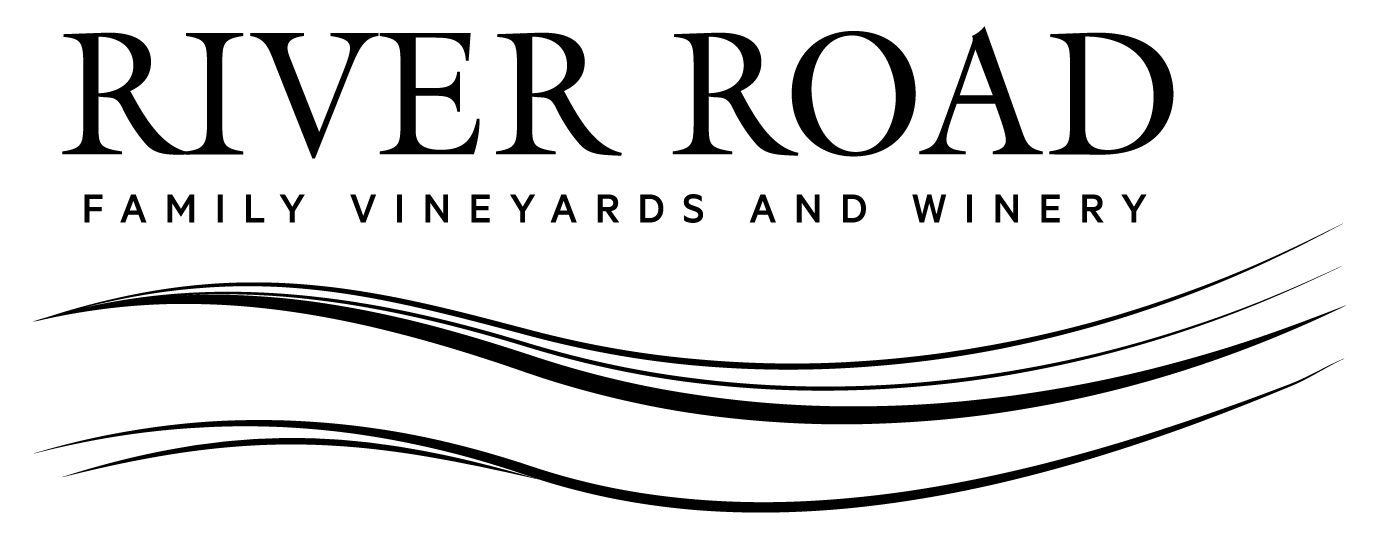VINEYARD UPDATE
Our vineyard is in bloom! It’s been 10 days since the first bloom was spotted in our Pinot Noir, and the remaining blocks have quickly followed. We’re seeing very uniform progress in each block – always a good omen for consistent ripening in the fall. Even the Chardonnay is fully in bloom, without the typical delay between the varieties. Hopefully we don’t see everything ripening at the same time, or our crush season could be more challenging than usual.
Good weather is critical during bloom, as the flowers are fertilized by wind-dispersed pollen. As such, pollination could be impacted by excessively wet, hot, or windy conditions. Grape flowers are like Goldilocks, with little tolerance for anything outside of “just right.” We’ve had a little rain, and temperatures have swung from cold to hot during bloom, but we’re still anticipating good results. Over the next couple of weeks, the berries will begin to grow in size, giving us a good indication of pollination’s success. I’ll show photos and provide a pollination report next month.
Each vineyard season offers its own set of tasks, and during the spring this list can seem overwhelming. Here are the main goals for our vineyard manager Alvaro Zamora and his crew, at this time of year.
Suckering and Shoot Thinning
Grapevines can express very high vigor, as they’ve evolved to grow rapidly into tree canopies seeking bright sunlight. We harness that instinct when we train the vines upright onto trellis wires, but the vigor can be challenging to control with healthy vines like ours. In addition to the primary shoots that we’re promoting, secondary and dormant buds can become active. If not removed, they’ll crowd the canopy and lead to problems later in the season. This removal is called “suckering.”
Cover Crop
We received some rainfall earlier this spring, which provided extra moisture for our between-row cover crop and weeds germinating under the vines. Repeated mowing, under-vine tilling (remember the Sunflower tiller?), and disking every other row can be utilized this month. These efforts maintain a proper balance in the vineyard.
Shoot Positioning
The wires strung on our trellis are movable, with hooks every six inches on the trellis posts, where wires can been attached. As the shoots grow in length, we move the wire upward to give tendrils something to grab. This will keep the shoots from lying down sideways, crowding neighboring shoots. Again, uniformity is our goal.
Leaf Removal
Once we’ve completed bloom, some leaf removal will begin. Near the developing clusters, a few leaves will be pulled from each shoot, encouraging airflow and some additional sunlight onto the clusters. This technique keeps the grapes free of mildew. It has the additional benefit of encouraging development of compounds in the grape skin that are improving wine quality.
VINEYARD NUTRITION
We harvested a substantial grape crop from our estate vineyard last year; a crop slightly larger than the vineyard’s historic average. Even with a healthy nitrogen-fixing cover crop and applications of compost tea, the vineyard might be a little short on nutrients. These minerals, including nitrogen, potassium, phosphorus, and various micronutrients, are important to vine health and to producing the highest quality grapes. To determine if available nutrients are at optimum levels, we take samples for analysis on a yearly basis and compare them to previous vintages
The most important time for measuring vineyard nutrition is when the vines are in bloom. Since the entire vineyard is now in full bloom, our vines were sampled over the past week.
Here is the process we use to sample the grapevines:
1. The blocks are sampled and analyzed individually. Each variety, clone, and rootstock combination performs slightly differently in our vineyard. Some blocks had higher yields, drawing more nutrients from the vine. Additionally, rootstocks vary in their ability to pull nutrients from the soil, which affects vine health.
2. When the vineyard block is nearly 100 percent in bloom, petioles (grape leaf “stems”) are pulled from the vines. A typical grape shoot has two clusters found on the second and third “nodes” (location where the leaf grows from the shoot). The leaf and its stem are pulled from a node, which also carries a developing cluster.

3. The leaf blade is removed and the petiole retained for analysis.

4. Up to 100 petioles are collected from each block, and combined to provide a good average for the block.

5. The process is repeated for each block. Then the sampled petioles are sent to an analytical laboratory to gather the results.
WINERY HIGHLIGHTS
May was a big bottling month for us, with our Ron Rubin Russian River Valley Chardonnay and Ron Rubin Russian River Valley Pinot Noir blends. They’re now resting in their bottles, awaiting release.
Now that we’ve completed bottling, we’re free to spend more time in the vineyards. We’ve begun our preparations for harvest, which will be here before we know it! There are many growth phases remaining between bloom and harvest, and we’ll be monitoring the development of the grapes in all of our vineyards. Much more to come!

Cheers!





